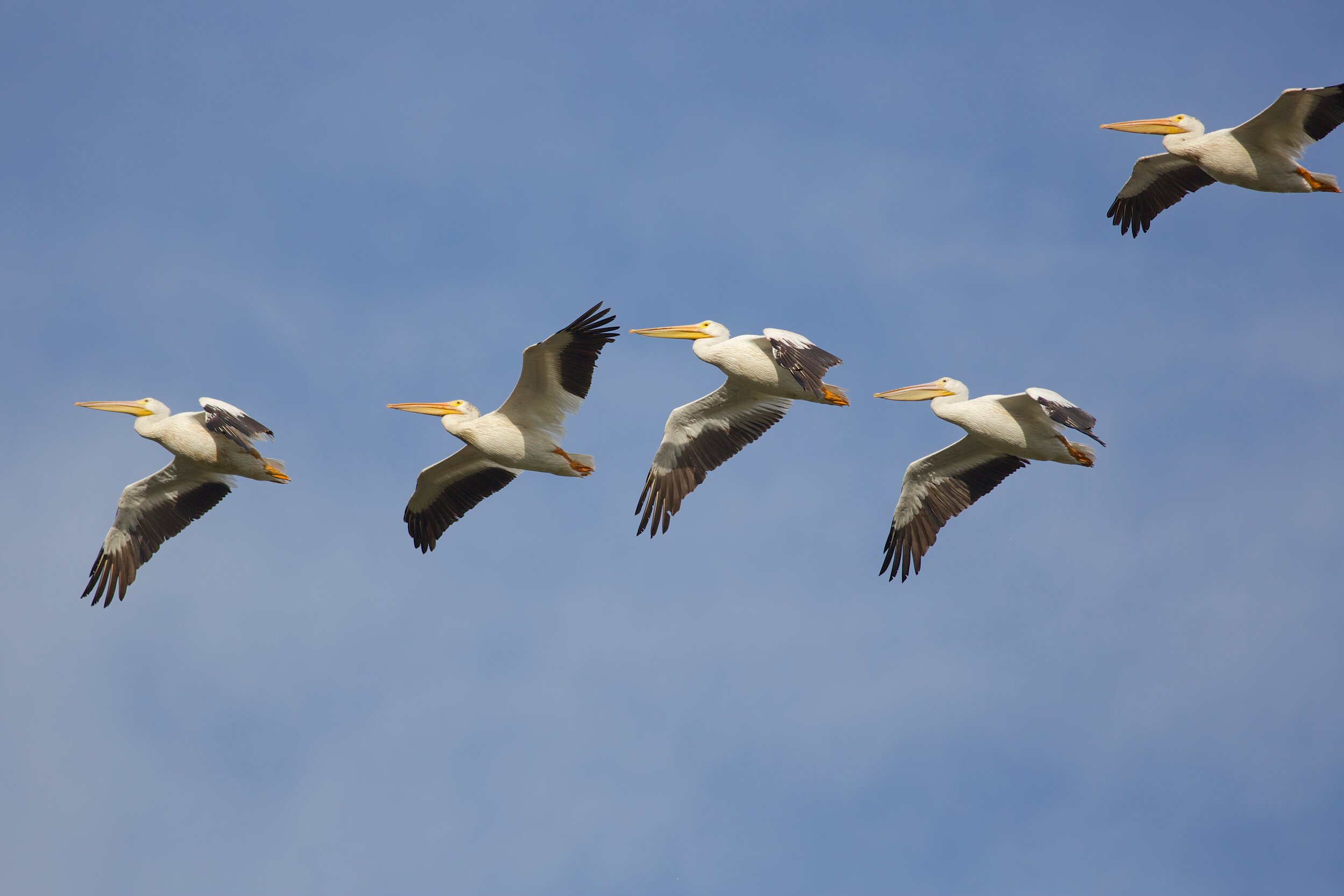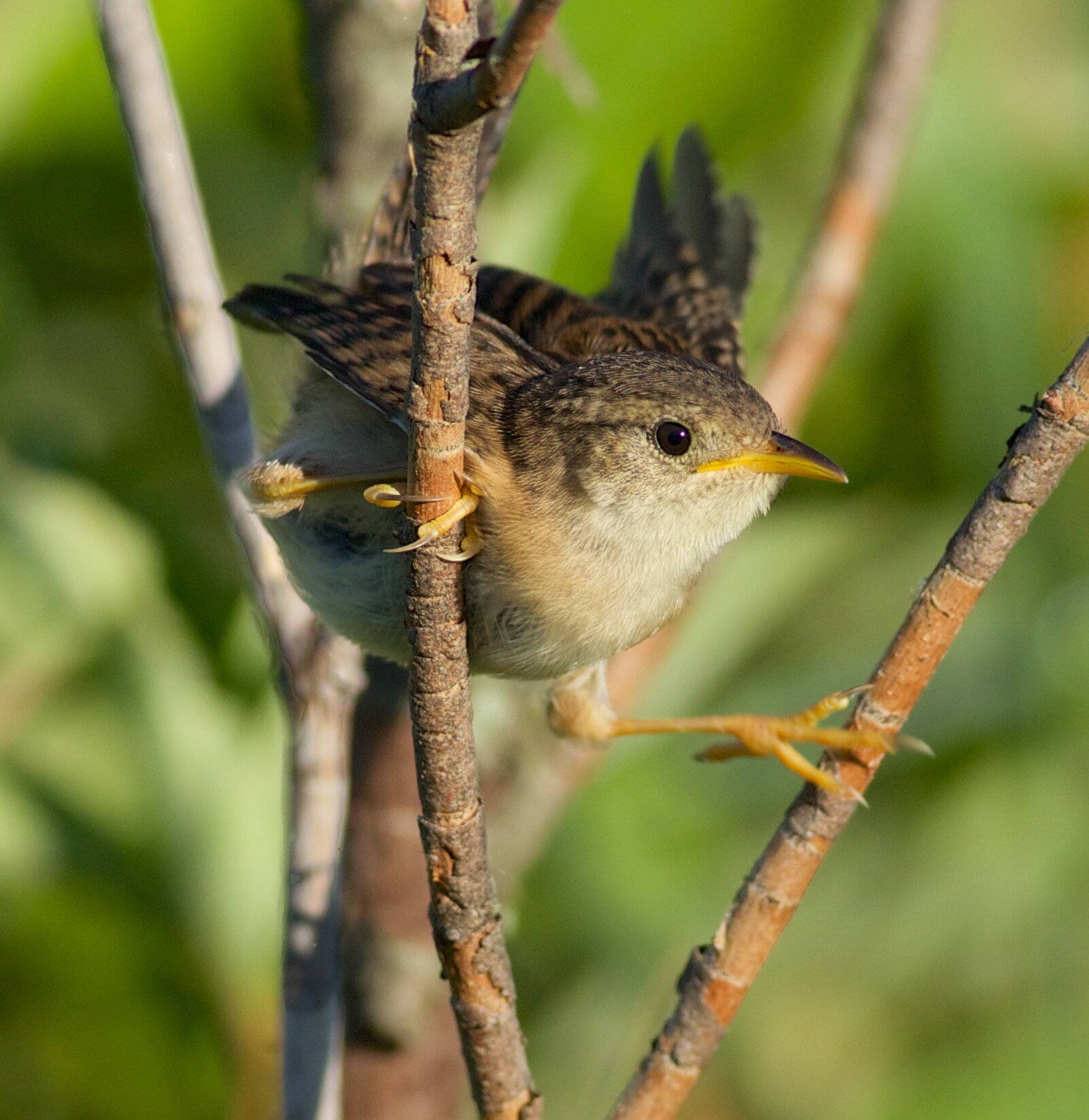Coming the world over, likely from a Venezuelan wintering ground, the dickcissel marks summer on Wisconsin prairies. These dickcissels, tardy migrants, get to work immediately, barking out their songs on tall perches in the tallgrass prairie. The males will fiercely defend territory, and once their clutch has hatched, they continue to do so, with minimal input into the care of the chicks. But male dickcissels take their territory defense seriously and will chase encroaching birds to the ground. As July afternoons turn humid and hazy, dickcissels will continue singing, gracing any listeners with their frank song. “Dick dick ciss ciss ciss” goes the call, and I like to imagine the birds as little dogs, throwing their heads back and barking out into their grassy world.
Photo by Andy Reago & Chrissy McClarren
One of the most interesting things about dickcissels is their propensity for swings in population. Wisconsin is at the northern edge of the breeding range of this species, but in irruption years (years of high “invasion” north) dickcissels have been found in all 72 Wisconsin counties. 2012 and 2017 were notable irruption years for the species. In 2017 at Faville Grove, and in Jefferson County at large, any place with grass had a singing dickcissel. Driving along some of our prairie restorations we would see and hear dozens of dickcissels. I can recall driving south to Fort Atkinson with the windows down and hearing dozens of dickcissels in the right-of-way, a meager territory for this proud bird. The 1930’s and 40’s saw population booms in six year intervals in Wisconsin. Perhaps next year will continue a recent cycle of a spike every five years.
You can find dickcissels with regularity at Faville Grove Sanctuary. Look for expansive open grasslands down Prairie Lane or north of Buddy’s on highway 89, and you should see singing dickcissels.
Written by Drew Harry, Faville Grove Sanctuary land steward
Cover photo by Andy Reago & Chrissy McClarren























